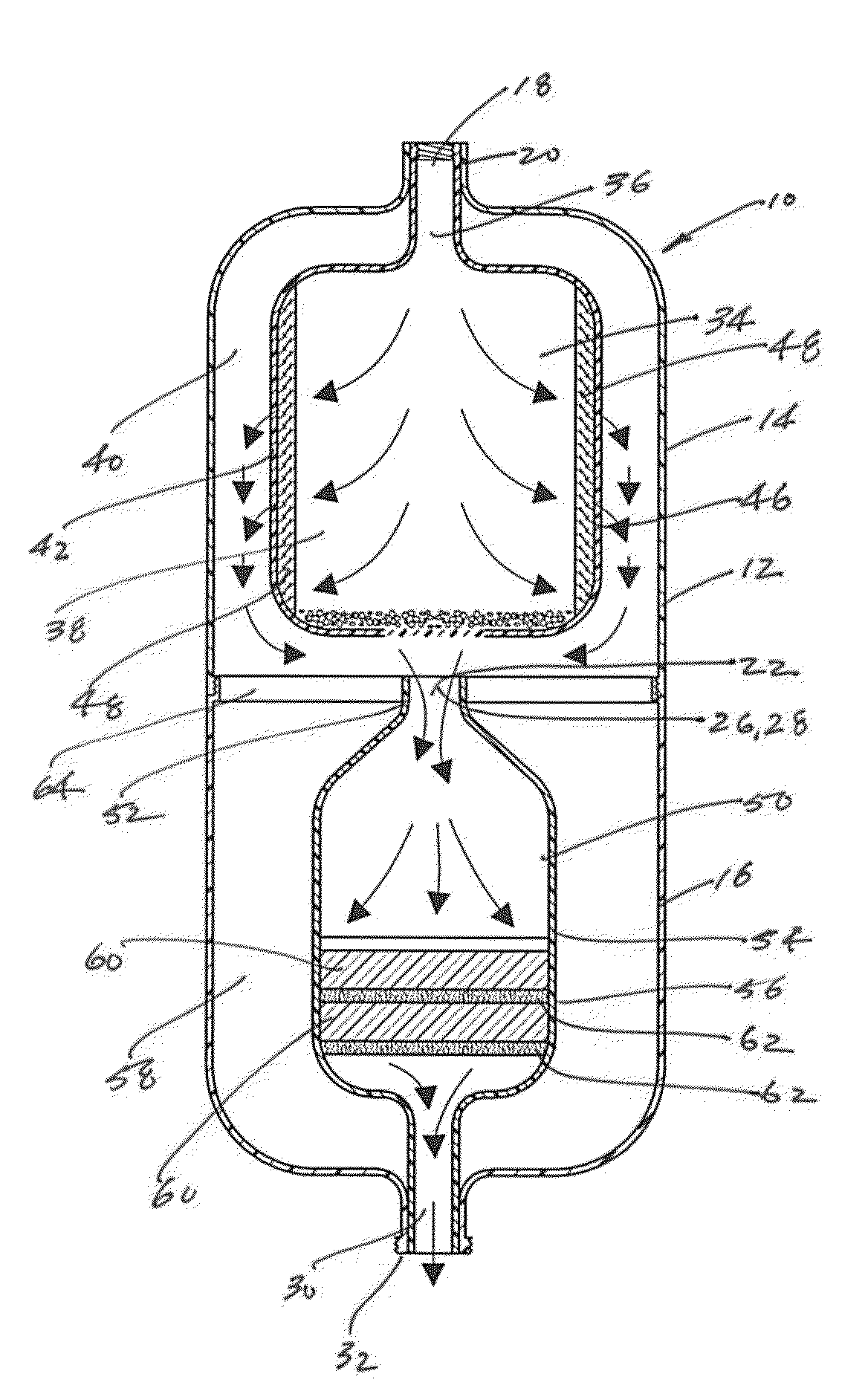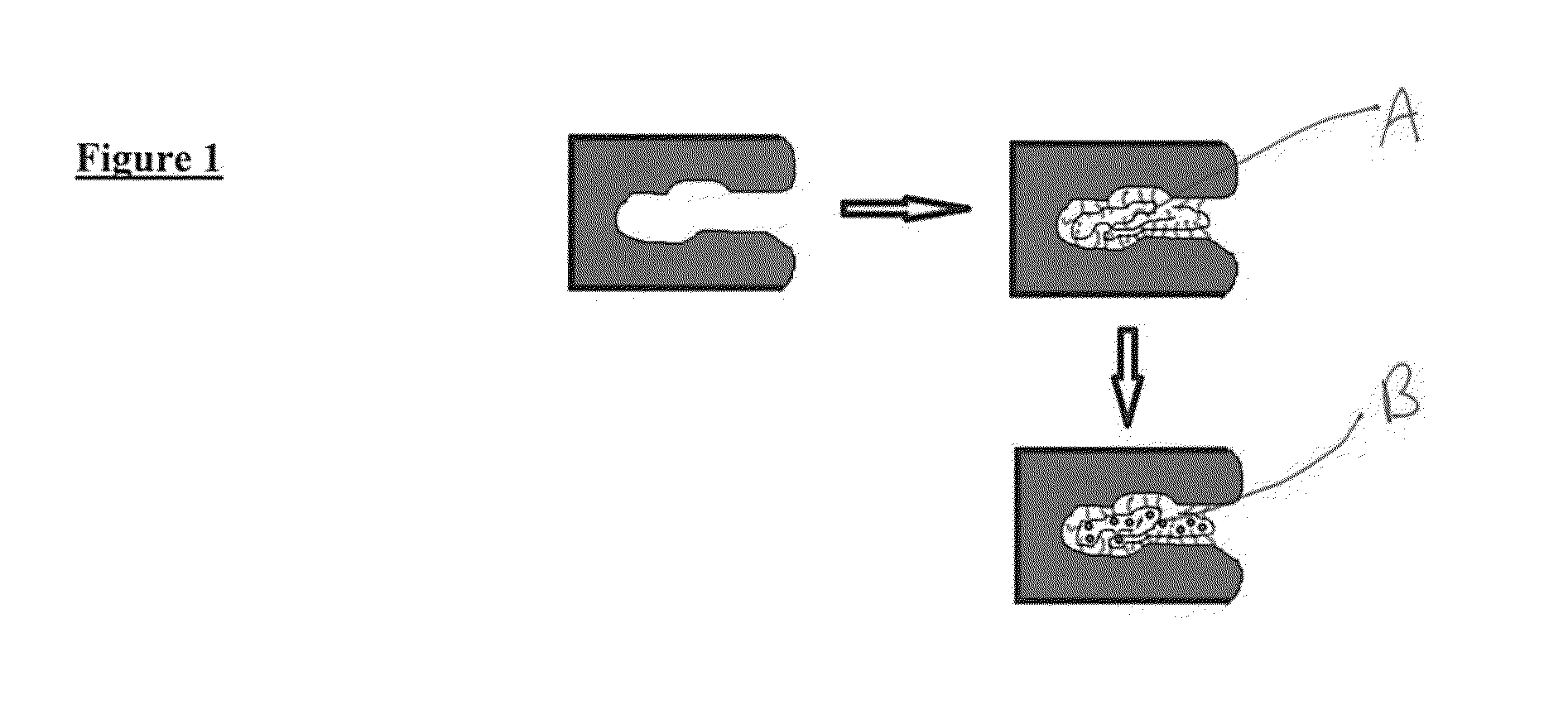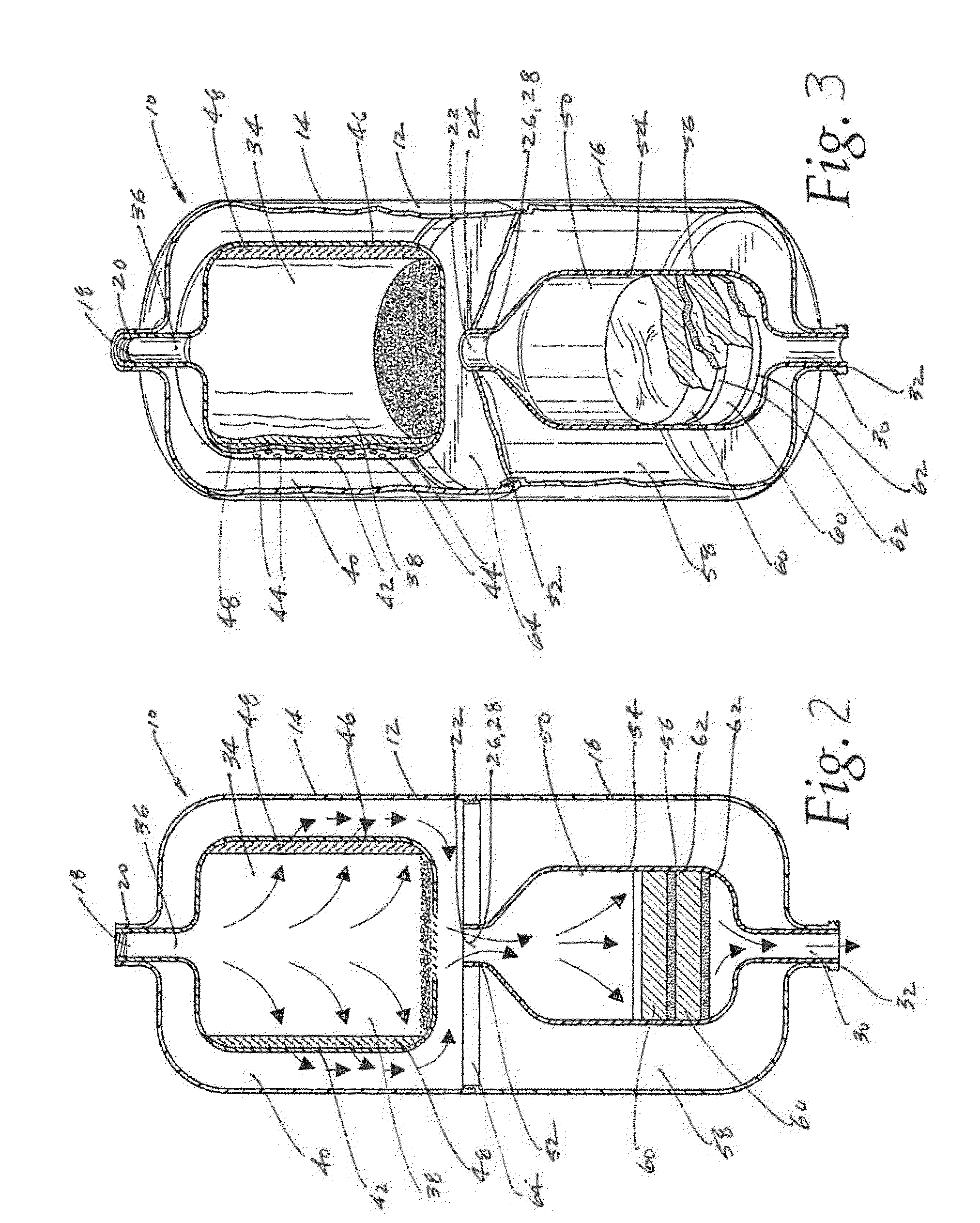Dental Amalgam Filter Including Tungsten Disulfide Nanopowder
a technology of dental amalgam and nanopowder, which is applied in the direction of ion exchange, separation process, water/sewage treatment, etc., can solve the problems of mercury emissions and the resulting contamination of aquatic systems, the ada has not implemented recommendations concerning the contamination of aquatic ecosystems by dental amalgam, and the operation of coal-fired power plants has received substantial criticism. , to achieve the effect of increasing the absorption and filtration capacity of the assembly, high performance and high surface area
- Summary
- Abstract
- Description
- Claims
- Application Information
AI Technical Summary
Benefits of technology
Problems solved by technology
Method used
Image
Examples
Embodiment Construction
[0032]A filter cake of the present invention can be incorporated into existing dental amalgam separators (and other sources of water soluble and small particulate mercury) in order to remove water soluble and micro-particulate mercury.
[0033]In particular, the present invention includes an article for removing water soluble and micro-particulate mercury from a fluid, the article comprising a solid porous support coated with tungsten disulfide nanopowder (WS2NP) to form a coated porous support whereby, upon contacting the fluid with the coated porous support, the WS2NP adsorbs mercury from the fluid. The solid porous support can include hydroxyapatite, cellulose and a copolymer comprising polyoxyethylene and polyoxypropylene including derivatives and blends thereof. The solid porous support can also include colloidal silver nanoparticles to provide anti-bacterial and anti-fungal properties to the solid porous support. The solid porous support is coated with a composition comprising a ...
PUM
| Property | Measurement | Unit |
|---|---|---|
| diameter | aaaaa | aaaaa |
| pore size | aaaaa | aaaaa |
| pressure | aaaaa | aaaaa |
Abstract
Description
Claims
Application Information
 Login to View More
Login to View More - R&D
- Intellectual Property
- Life Sciences
- Materials
- Tech Scout
- Unparalleled Data Quality
- Higher Quality Content
- 60% Fewer Hallucinations
Browse by: Latest US Patents, China's latest patents, Technical Efficacy Thesaurus, Application Domain, Technology Topic, Popular Technical Reports.
© 2025 PatSnap. All rights reserved.Legal|Privacy policy|Modern Slavery Act Transparency Statement|Sitemap|About US| Contact US: help@patsnap.com



